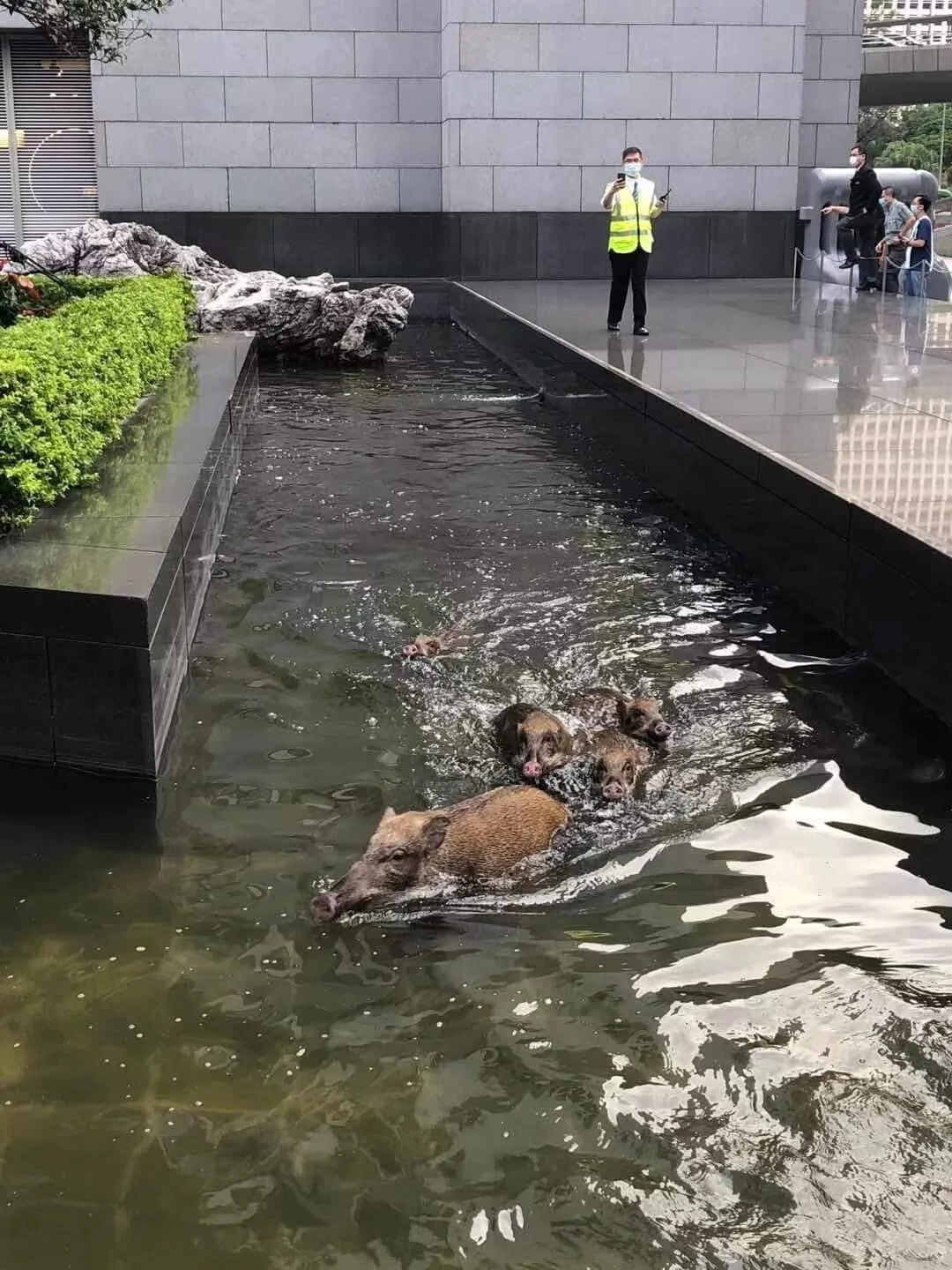Young wild boar seen travelling on Hong Kong MTR.
On 19 June 2021, passengers on board the MTR departing from Quarry Bay station were greeted with a rare passenger - a young wild boar heading somewhere on this particular Friday afternoon. The lone boar later interchanged and ended up along the Tseung Kwan O line. Determined to stay onboard, the youngster braved staff members of the MTR but was subsequently safely captured by the Agriculture, Fisheries and Conservation Department (“AFCD”) and sent back into the wild on the same afternoon.
Previous similar incidents
There have been similar incidents of wild boars entering MTR stations. On 19 June 2019, a boar found its way to the Kennedy Town MTR station. Despite being believed to be injured before sneaking into the station, the boar was confronted with metal barriers and a disproportionate crowd of people trying to capture it, leading to suffer injuries including damaged rear hooves.
Earlier still, on 20 December 2016, two boars were seen near the Hong Kong International Airport, believed to be natives of Lantau Island. One of the boars had to be euthanised as its hooves were badly injured during the capture, with images showing the fully-grown boar was bleeding from both its nose and mouth. Following thorough checkups, the veterinarian considered it would be difficult for the wounds to heal and for the boar to survive upon release in the wild even after a prolonged period of treatment. The second boar was last seen disappearing into nearby water.
As recent as 26 July 2021, a wild boar bit a Hong Kong hiker whilst attempting to take its photo in a country park. The 62 year-old woman suffered minor leg injuries and was taken to Pamela Youde Nethersole Eastern Hospital in Chai Wan for treatment.
Why are boars moving away from mountains and bushes?
The prevalence of boars seen in more urban areas continue to be increased for instance, charging on highways, found dead on the side of highways and even swimming in water features in the middle of town. Some speculate that boars move down from their homes in the hills in search of food for various reasons, including the destruction of their natural habitat, human feeding and easily accessible food residues etc.
Why is it alarming that boars’ presence in the residential areas?
The problem is two-fold.
Firstly, it is a matter of safety and welfare for the boars. From the non-exhaustive list of previous incidents, boars found in urban areas are often met with hard items such as shields and metal barriers which may cause severe lasting injuries or even cost their lives. In addition, if boars change their behaviour over time in reliance purely of human food sources, it might mean a loss of their innate ability to search for food and continued reliance on human interaction..
Secondly, some might find boars in the residential area a nuisance. For instance, when they go over refuse and when they meet snout to face with people who have no idea how to react around them. The reaction people have when faced with a boar is an unknown. Although it is hoped that a sense of calm and sensibility are employed, there will always be members of the public who become easily frightened to the point of defensive actions against an innocent animal.
What are the current laws in place?
Under the Wild Animals Protection Ordinance (Cap. 170), certain rural areas in Hong Kong have been classified as feeding ban areas. Feeding of wild animals therein will be liable to prosecution and a maximum fine of $10,000, although actual prosecution for contravention of the Ordinance is very rare.
Apart from fines, the AFCD have also worked strenuously to respond to various issues. For example, contraception was performed on some healthy female wild boars to control their numbers and in March 2019, some boars were relocated to some more remote countryside areas, away from the residential areas. On the other hand, to combat the food inducement issue, the AFCD introduced three versions of wildlife-resistant bins and containers, for example, ones that are fenced to prevent boars from going over or entering the bins, ones that are operated by foot pedal etc.
A well-known NGO, The Wild Boar Concern Group, has endeavoured to be the voice for wild boars as well as trying to educate the general public about these animals through workshops and other social media initiatives, with the aim of building better relationships with wild boars as well as learning to respect their habitats.
Conclusion
All in all, it was lucky that the young boar aboard the Island MTR Line on 19 June 2021 was not physically injured during the capture and its subsequent release back into the wild.
Fortunately, the AFCD and some NGOs are actively putting their hearts into voicing out for the better of boars’ lives. Every step forward counts, and it is never too late to start raising awareness.
Courtesy of Jing Shan Wong
Main Source: SCMP


